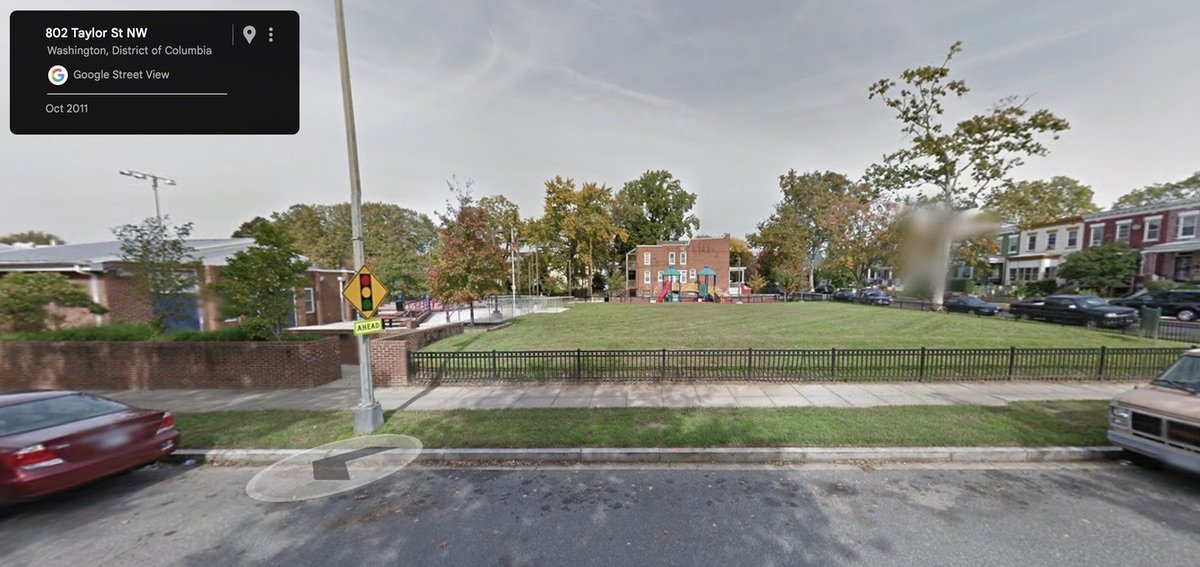As summer comes to Petworth, so do the new blooms
/by Steven Feingold
If you’ve found yourself walking around our beautiful neighborhood admiring the flowers and wondering what you’re looking at, we’re here to help. Welcome to "Petworth Blooming,” a series that features some of the most common plants seen around Petworth.
Catalpa tree along Rock Creek Church Road
Catalpa is a fast growing native tree, and one of the few trees to bloom this late in the year. The large tube-shaped flowers will fill the entire block with scent, and as the blooms fall off, create a magical white carpet under the tree. The heart-shaped leaves are so large that they can make the tree look a little goofy when it’s small, but give the large trees an almost tropical look. The seeds form in long string like pods which are also quite distinctive.
Large flowered Coreopsis in Grant Circle, with blue Bachelor’s Buttons in the background.
Large Flowered Coreopsis is one of many species of coreopsis which grow well in our area. They are in the aster family so they have rotationally symmetric petals surrounding a central cluster of many small flowers. They do well mixed in with other plants of similar height (about 2 feet tall) and will make lots of seed. The seeds are said to look a little like ticks, thus the common name for this genus is Tickseed.
Mulberry tree in an alley behind New Hampshire. The black fruits are ripe.
If you happen to see a bunch of dark stains on the sidewalk as you walk by, take a look up you’ll probably spot a Mulberry tree. Generally considered a “weed tree,” mulberries grow very fast and popup everywhere thanks to the birds who love to eat and then spread the berries. People also eat the fruits, both fresh and dried, though some trees have tastier fruit than others.
Red and pink Dianthus on 4th St. The yellow flower is a coreopsis.
Dianthus are a diverse group of flowers, which include low creepers and taller, more showy plants. Apparently the verb “pink”, as in what you do with pinking-shears derives from an older name for Dianthus, as the edges of the flowers have very intricate saw-tooth patterns.
Agastache blooming at the triangle park at 4th and Buchanan.
Agastache or Hyssop is a great native plant that has started making it into the nursery trade in recent years. It has long lasting upright blooms that are very attractive to a variety of pollinators. This member of the mint family has the characteristic square stems that are the easiest identifier of mints. Available colors include light blue, yellow and orange.
Catmint in the Rock Creek Church cemetery.
Another plant from the mint family is Catmint. Closely related to catnip, this is a more ornamental plant that will not bring all of the neighborhood cats to visit. It forms nice low-growing mounds with bountiful lavender colored flowers in mid-spring.
Evening Primrose on Allison Street.
White Evening Primrose has flowers that start out white, and then become pink as they age. The flowers first open in the evening, before closing once the heat of day comes, though they will remain open if it’s cloudy or cool. It is originally from areas west of the Mississippi river. There is also a Yellow Evening Primrose which is native to the DC region.
Blue-flag iris at the new rain garden at St. Gabriel’s Church on Grant Circle.
While most of the bearded iris have finished blooming, the Blue-Flag Iris is at its peak right now. This native iris has smaller flowers than some other iris species, but it makes up for it with a greater number of blooms. It does best in wet areas, and is often used in rain gardens.
Blue Baptisia on Decatur.
Baptisia or False Indigo is winding down its blooming season now, but there are still a few stragglers out there. A native member of the pea family, baptisia is very drought tolerant. The upright spikes of yellow or blue flowers are a good early season source of food for bees. Later in the year, the seed pods will dry out forming miniature rattles.
A large elderberry bush in the curbstrip along 4th St
Elderberry is a fast growing native shrub that produces many small white flowers on complex branching flower-heads. Later in the season it will produce lots of berries that are loved by birds. The boiled berries can be used to make a good jam or if you’re really ambitious, wine. Elderberry plants handle pruning well, so if it ever grows too tall, just chop it way back and it will re-sprout nicely.
Foxglove’s towering spikes of bell shaped flowers are quite spectacular. This is a biennial plant, meaning it grows for one year, and the next year it blooms, produces seeds and then dies. Nurseries usually sell 1 year old plants so you don’t have to wait to see the flowers. All parts of the plant contain a cardiac toxin, which is still used medicinally (though as a carefully processed prescription pill). Colors are mostly white, pink and purple.
So what's blooming in June? We’ll talk about that… next month!








































